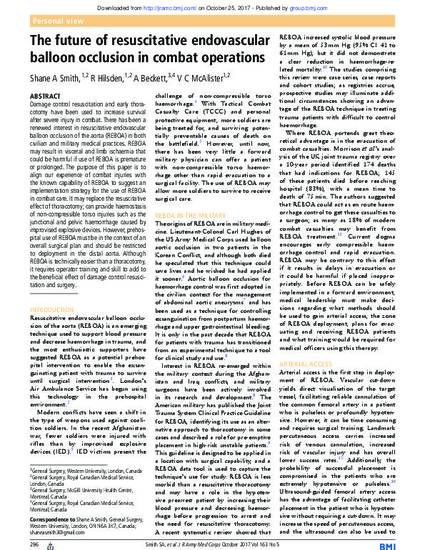
Article
The future of resuscitative endovascular balloon occlusion in combat operations.
Journal of the Royal Army Medical Corps
(2017)
Abstract
Damage control resuscitation and early thoracotomy have been used to increase survival after severe injury in combat. There has been a renewed interest in resuscitative endovascular balloon occlusion of the aorta (REBOA) in both civilian and military medical practices. REBOA may result in visceral and limb ischaemia that could be harmful if use of REBOA is premature or prolonged. The purpose of this paper is to align our experience of combat injuries with the known capability of REBOA to suggest an implementation strategy for the use of REBOA in combat care. It may replace the resuscitative effect of thoracotomy; can provide haemostasis of non-compressible torso injuries such as the junctional and pelvic haemorrhage caused by improvised explosive devices. However, prehospital use of REBOA must be in the context of an overall surgical plan and should be restricted to deployment in the distal aorta. Although REBOA is technically easier than a thoracotomy, it requires operator training and skill to add to the beneficial effect of damage control resuscitation and surgery.
Keywords
- hemorrhage; shock; REBOA
Disciplines
Publication Date
October, 2017
DOI
10.1136/jramc-2017-000788
Citation Information
Shane A Smith, Rich Hilsden, Andrew Beckett and Vivian C. McAlister. "The future of resuscitative endovascular balloon occlusion in combat operations." Journal of the Royal Army Medical Corps Vol. 163 Iss. 5 (2017) Available at: http://works.bepress.com/vivianmcalister/238/
